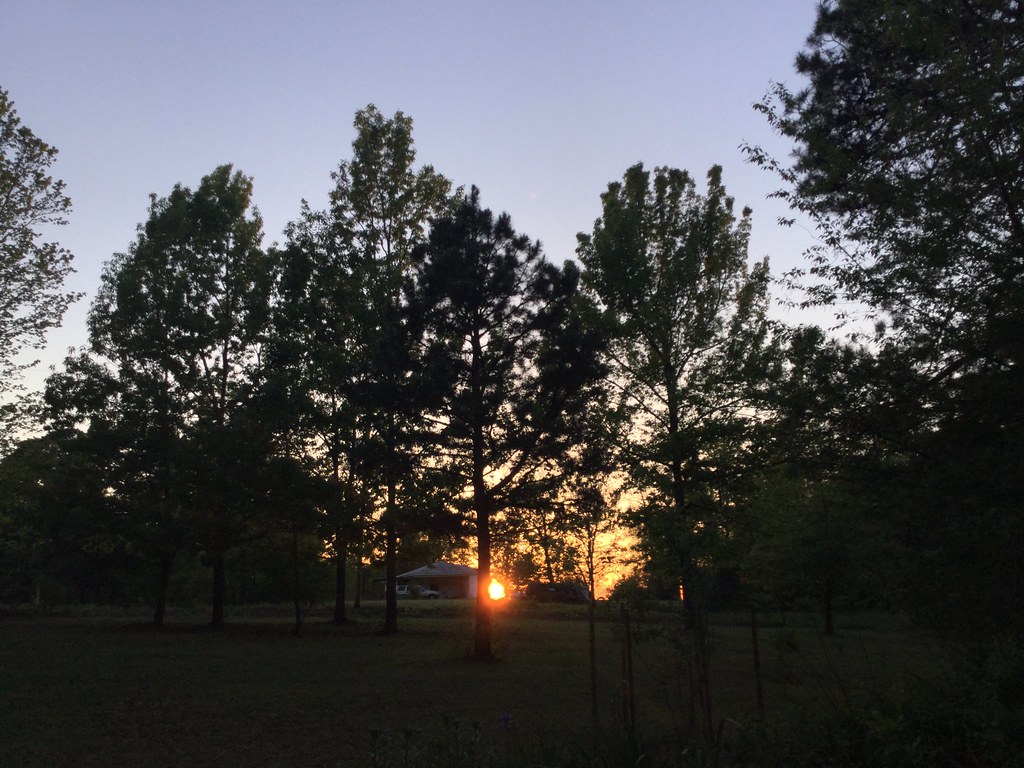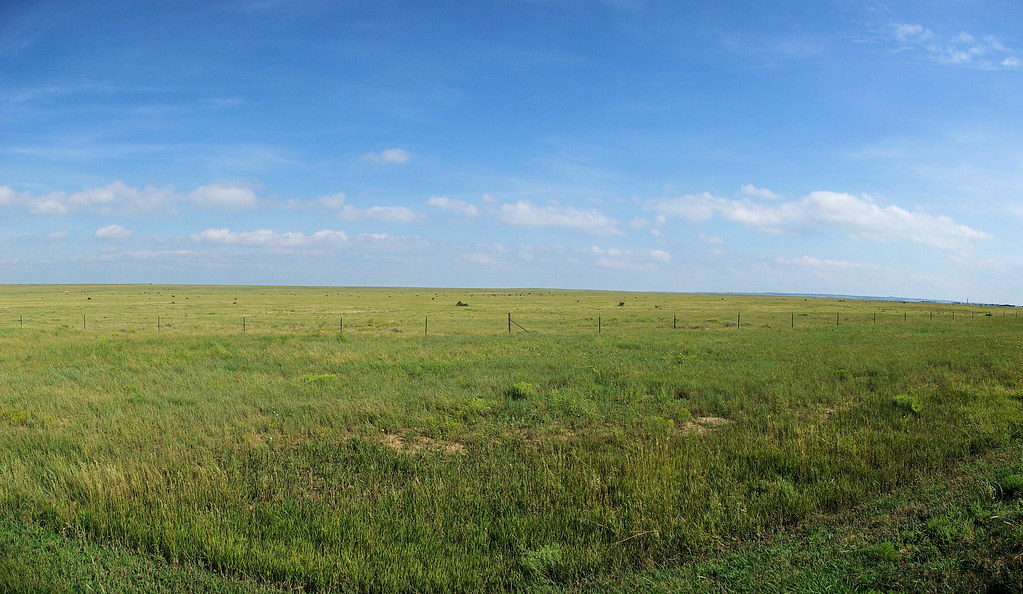Photography Now & Then #118
I had noticed yesterday that the sun had moved far enough north that its setting could be seen from our yard. Tonight, I remembered that the iPad also is a camera, so decided to use it to get a sunset photo. While I was able to capture a decent enough photo, the iPad is not going to be a regular choice for taking pictures. The main problem is that its size and shape make it awkward for handheld photography, especially for making any adjustments to settings.

Now: Sunset, west-central Arkansas, April 29, 2018 (Apple iPad Air 2)
______________________________________
No trees, no buildings, no hills – nothing to block the wind in the high plains of southeast Colorado.

Then: High plains of South-eastern Colorado, 28 miles WSW of Pritchet, Baca County, Colorado, August 30, 2009 (Pentax K10D)
Baca County, Colorado is in the southeast corner or Colorado, bordered on the east by Kansas and on the south by the Oklahoma panhandle and a small 4.65 mile sliver of New Mexico. We had entered Colorado on US 385 traveling north from Boise City, Oklahoma. Once in Colorado, we took secondary roads across the windy high plains of southeast Colorado.
And it sure was windy.
Situated at around 5,000 feet in elevation, wind is common – and, sometimes, constant – in the semi-arid high plains of Colorado. The wind contributed to the disastrous “dirty 30s” of the early 20th century.
Depression and the Dust Bowl (ColoradoPreservation.org)
Throughout the 1930s, eastern Colorado along with the majority of the Southern Plains states, experienced extreme droughts. Baca County was among the areas hardest hit, near the center of what was named the Dust Bowl. Southeastern Colorado received only 126 total inches of moisture for all the years between 1930 and 1939. This was 205 inches less than the previous decade, and well below the 18 inches annually needed to grow wheat. No rain meant no crops, and no crops meant no protection for the soil when the spring winds arrived.
Dust was not uncommon in the semi-arid areas of Colorado when the high plains winds blew, so no one was really surprised to see a few “dusters” in eastern Colorado in 1931. They came back the next year with more vigor, and by 1933 the dust storms were so intense that everyday life became almost impossible for both people and livestock. One storm, beginning on May 9, 1934 and lasting for several days, was estimated to have removed 300 million tons of fertile top soil off of the Great Plains. The storms actually increased overall in numbers and intensity as the “dirty thirties” continued, with 1937 being the worst on record. Colorado’s black blizzards of the 1930s were different in many ways from those of previous years. These were more intense, lasted for days, and returned nearly every year during the “dirty thirties.” The storms destroyed millions of farmland acres and caused mental and physical anguish to residents. Towns had to turn on their street lights during the day; dust sifted into buildings, causing people to put wet sheets over doors and window to try to stop the infiltration. They ate meals under a tablecloth and had to wear goggles or masks of wet towels while outdoors. Dust covered roads, fences, and cars, piling as high as snow drifts; rail traffic was stopped. Cases of dust pneumonia reached epidemic proportions in southeastern Colorado in animals as well as humans. Red Cross workers and nurses were sent to Baca County with masks and goggles.
Photography Now & Then Notes:
- Series Photos
- The Now photo is one that is almost always taken the day of the blog post. In some instances, posts may be backdated if internet access is not available on the day of the photo or other reasons prevent posting Photography Now and Then.
- The Then photo is usually a randomly selected older photograph from a batch of photos specifically “curated” for Photography Now and Then.
- Each photo in this series is an “original work” – a copyright term – of Michael Goad.
- Reference links were accessed on the date the blog post was published, unless otherwise stated.
- The title convention for Photography Now & Then blog posts evolved early on from one word related to each photo separated by “&” to usually being the first word in the caption description for each photo.

